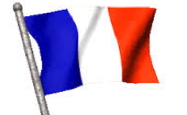 This book is dedicated to biologists, chemists and computer scientist beginners. It is organized in brief, illustrated chapters with practical examples. Clear definitions of biological, chemical and IT concepts are given in a glossary section to help readers who are not familiar with one of these disciplines. Chemogenomics and Chemical Genetics should therefore be helpful for students (from Bachelor's degree level), technological platform engineers, and researchers in biology, chemistry, bioinformatics, cheminformatics, both in biotech and academic laboratories.
This book is dedicated to biologists, chemists and computer scientist beginners. It is organized in brief, illustrated chapters with practical examples. Clear definitions of biological, chemical and IT concepts are given in a glossary section to help readers who are not familiar with one of these disciplines. Chemogenomics and Chemical Genetics should therefore be helpful for students (from Bachelor's degree level), technological platform engineers, and researchers in biology, chemistry, bioinformatics, cheminformatics, both in biotech and academic laboratories.